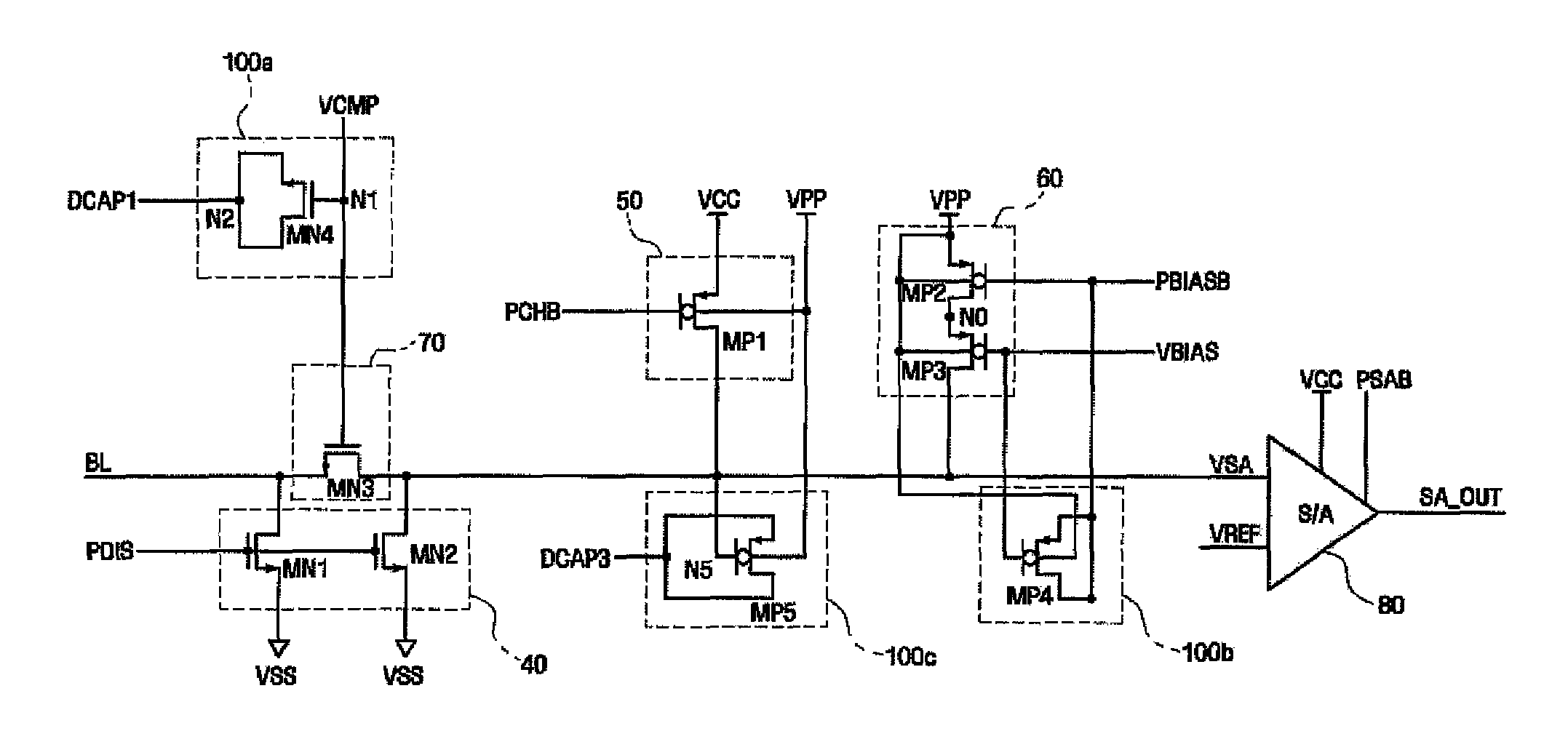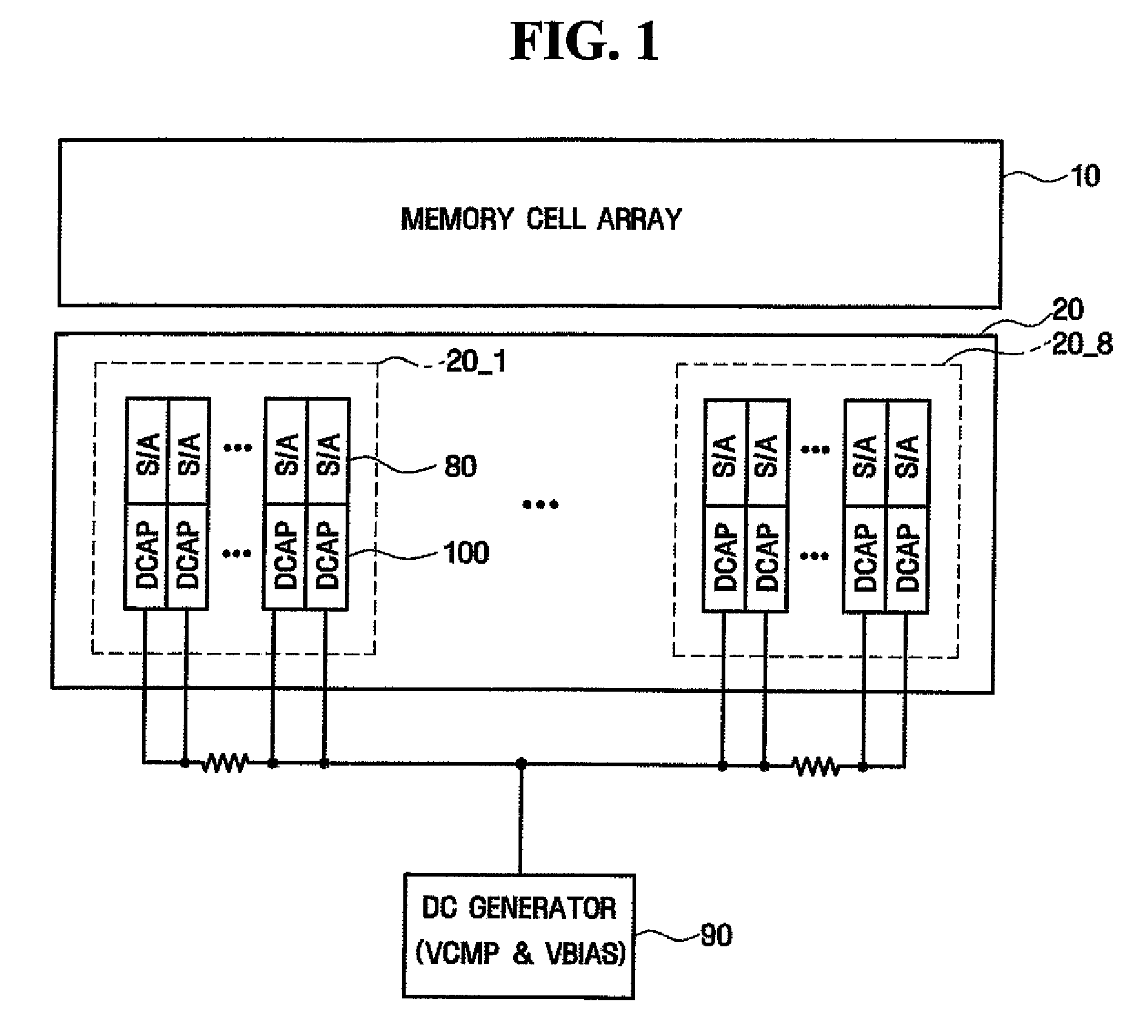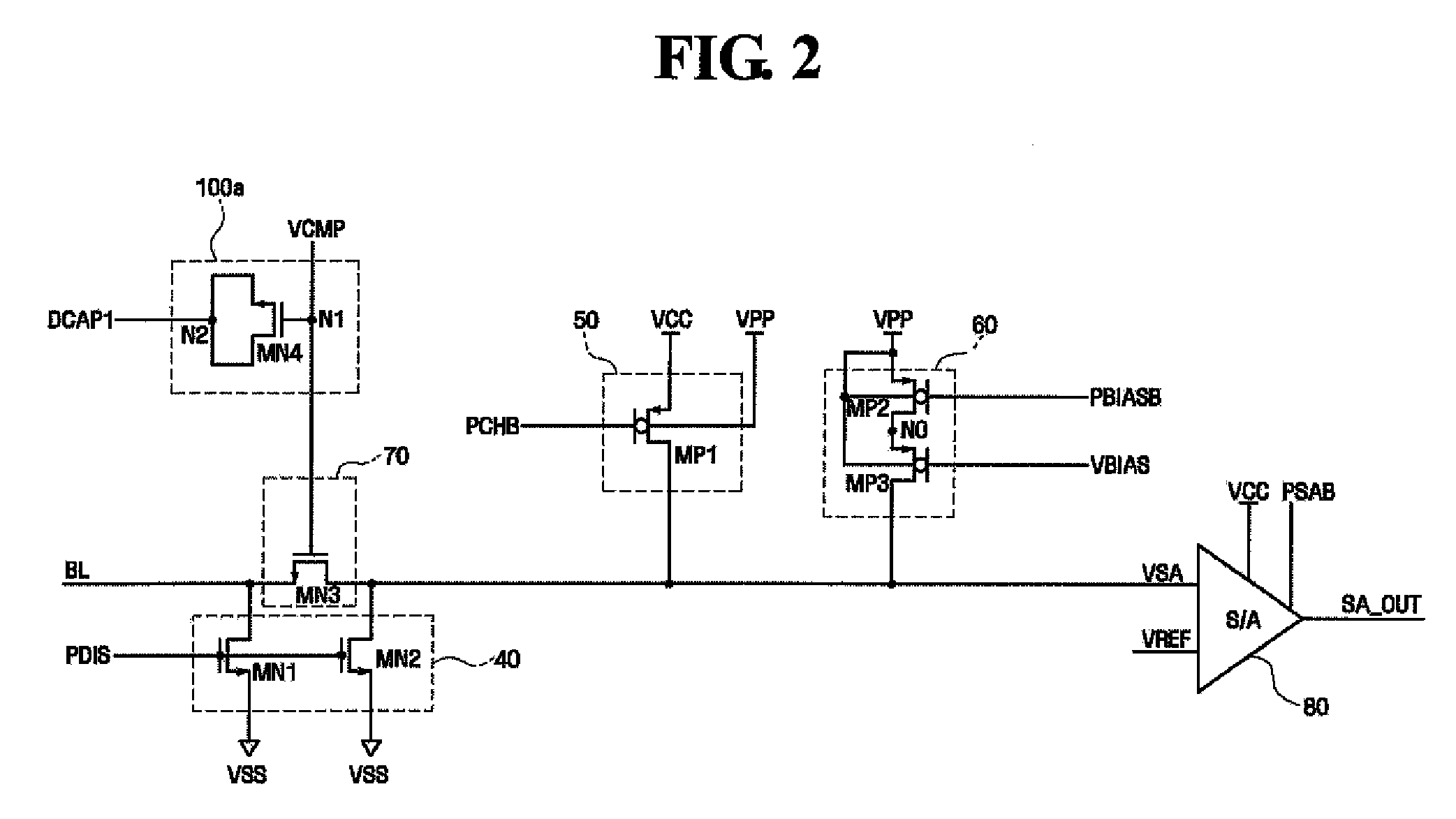Nonvolatile memory device using variable resistive element
a resistive element and memory device technology, applied in information storage, static storage, digital storage, etc., can solve the problems of operation errors during read operations, reducing sensing margins, and affecting the reliability of read operations, so as to reduce noise, improve read operation reliability, and increase sensing margins
- Summary
- Abstract
- Description
- Claims
- Application Information
AI Technical Summary
Benefits of technology
Problems solved by technology
Method used
Image
Examples
first embodiment
[0039]FIG. 2 is a circuit diagram illustrating a data read circuit that is used in a nonvolatile memory device according to the present invention. FIG. 3 is a timing diagram illustrating the operation of the data read circuit shown in FIG. 2. FIG. 4 is a circuit diagram of a portion of the data read circuit shown in FIG. 2.
[0040]First, referring to FIG. 2, the data read circuit that is used in the nonvolatile memory device according to the first embodiment of the present invention includes a discharge unit 40, a precharge unit 50, a read bias supply unit 60, a clamping unit 70, a sense amplifier 80, and a decoupling unit 100a.
[0041]The discharge unit 40 discharges a sensing node VSA and / or a bit line BL coupled to a nonvolatile memory cell that is selected before the data read operation, with a predetermined level, for example, with a ground voltage VSS. The discharge unit 40 may include an NMOS transistor MN1 that is coupled between the bit line BL and the ground voltage terminal ...
second embodiment
[0058]FIG. 5 is a circuit diagram illustrating a data read circuit that is used in a nonvolatile memory device according to the present invention. FIG. 6 is a timing diagram illustrating the operation of the data read circuit shown in FIG. 5. FIG. 7 is a circuit diagram of a portion of the data read circuit shown in FIG. 5. The same components as those in FIGS. 2 to 4 are denoted by the same reference numerals, and the detailed description thereof will be omitted. The embodiment of FIG. 5 does not include the decoupling unit 100a.
[0059]Referring to FIG. 5, a decoupling unit 100b that is used in the nonvolatile memory device according to a second embodiment of the present invention removes noise of a read bias control signal VBIAS. Specifically, when a read bias supply unit 60 starts to supply a read bias to a sensing node VSA, it is possible to remove the noise that affects the read bias control signal VBIAS. The decoupling unit 100b may include a second decoupling capacitor MP4 th...
third embodiment
[0069]FIG. 8 is a circuit diagram illustrating a data read circuit that is used in a nonvolatile memory device according to the present invention. The same components as those in FIGS. 2 to 7 are denoted by the same reference numerals, and the detailed description thereof will be omitted.
[0070]Referring to FIG. 8, the nonvolatile memory device according to the third embodiment of the present invention includes both the decoupling unit 100a described in FIG. 2 and the decoupling unit 100b described in FIG. 5. The nonvolatile memory device according to the third embodiment of the present invention removes noise of a clamping control signal VCMP and noise of a read bias control signal VBIAS. Therefore, it is possible to increase a sensing margin and improve reliability of a read operation.
PUM
 Login to View More
Login to View More Abstract
Description
Claims
Application Information
 Login to View More
Login to View More - R&D
- Intellectual Property
- Life Sciences
- Materials
- Tech Scout
- Unparalleled Data Quality
- Higher Quality Content
- 60% Fewer Hallucinations
Browse by: Latest US Patents, China's latest patents, Technical Efficacy Thesaurus, Application Domain, Technology Topic, Popular Technical Reports.
© 2025 PatSnap. All rights reserved.Legal|Privacy policy|Modern Slavery Act Transparency Statement|Sitemap|About US| Contact US: help@patsnap.com



